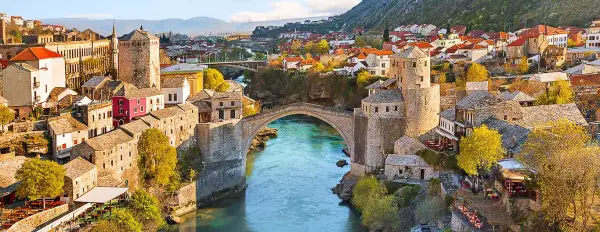Small Group Experiential Travel
Tour Code
AD1
Start
Ljubljana (LJU)
End
Dubrovnik (DBV)
Tour type
Cultural
Max Group Size
18
When To Go
May, Sep
Activity Level
2 - Moderate
Overnight in
Mostar, Zagreb, Split, Dubrovnik, Opatija, Hvar, Ljubljana, Bled, Piran, Bovec, Plitvice
- Overview
- Info & Inclusions
- Itinerary
- Map & Hotels
- Photos
- Dates & Prices
Highlights
- Guided walking tours of Ljubljana, Hvar, Dubrovnik, etc
- Stunning Julian Alps
- Plitvice Lakes hike
- Gorgeous and historic Istrian Peninsula
- Rebuilt Mostar bridge
Description
Adriatic Tours by Adventures Abroad: what do you get when you mix villages dripping in elegant, old world charm with mountains that fall straight into intensely blue coastal waters? The Adriatic.
The breakup of Yugoslavia left in its wake six countries with a distinct history and cultural make up within Europe. Known for an incredible array of nature, densely forested mountains with pristine alpine lakes, Adriatic tours beckon everyone from the adventure enthusiasts to casual countryside strollers, museum aficionados to marketplace bargain hunters and foodies who wish to indulge.
Sophisticated cities offer flavours from numerous empires, balancing an East and West feeling with noticeable impressions from older civilizations such as the Roman, Greek and Ottomans. In an area suspended between the Balkans and Central Europe, culture oozes from every town.
Nowhere does an ancient city history blend with recent history so dramatically as Mostar, a small town in Bosnia-Herzegovina. The medieval town with a famous stone bridge that arcs high above the Neretva River which needed to be completely rebuilt after the conflict in 1990. Much rebuilding has taken place to return the charm of this medieval town built in the 16th and 17th centuries.
Coastal cities such as Dubrovnik, with its marble streets, stone buildings and red tiled roofs, have seen visitors and rulers from the Ottomans, the Venetians, the Austro-Hungarians, to Napoleon's army. A walk along the city walls feels almost akin to a walk along a museum with a mass of towers and fortifications rising above the harbours and gleaming sea.
Throughout Croatia on Adriatic tours, one can find evidence of Roman inhabitants such as the beautifully tiled mosaics of the Euphrasian Basilica in Porec, massive gladiatorial amphitheatre in Pula, the Roman Forum in Zadar, to the enormous retirement Palace of the Roman Emperor Diocletian in Split.
For nearly 3.5 centuries, the Venetian empire ruled over much of Croatia and the prosperity of the empire can be felt in photogenic harbours and towns such as Hvar.
Inland from the dazzling Adriatic, a diverse nature of the region really shines. From the wooded walkways that twist through the cascading waterfalls of Plitvice Lakes National Park to the limestone plateau and cave system at Postojna Caves in Slovenia. Once submerged by the ocean, this region is now a 2 million year old network of caves characterized by subterranean rivers.
The alpine region of Slovenia contains impossibly emerald lakes such as Bled, with the town's castle perched above, Bled Otok, the small island with a church in the center of the lake. Set against the spectacular backdrop of the Karavanke Mountains and Julian Alps, the town is often considered the prize of Slovenia, along with Ljubljana.
With a fuse of influence many of Slovenia's towns feel similar to Vienna or Prague: elegant, charming and dripping in history.
Adriatic tours like no other! We travel through the magnificent scenery of Slovenia, where we spend time exploring centuries-old churches and castles, gazing at idyllic lakes and meandering down the market streets of charming towns, all set against the spectacular backdrop of the Karavanke mountains and the Julian Alps.
Crossing the border into Croatia, we head for the Istrian Peninsula, wherein ancient Roman ruins can be found in abundance, and on to the natural wonderland of the Plitvice Lakes.
After a walking tour of the beautiful island of Hvar, we enter Bosnia and Herzegovina to take in the remarkable blend of Mediterranean and Oriental architecture, ending our Adriatic tour in Dubrovnik, Croatia, a town hailed as 'The Pearl of the Mediterranean' for its astounding beauty, sophisticated history and culture, and prosperity.
Sign up for our Adriatic tours for a fantastic overview of the entire region.
The breakup of Yugoslavia left in its wake six countries with a distinct history and cultural make up within Europe. Known for an incredible array of nature, densely forested mountains with pristine alpine lakes, Adriatic tours beckon everyone from the adventure enthusiasts to casual countryside strollers, museum aficionados to marketplace bargain hunters and foodies who wish to indulge.
Sophisticated cities offer flavours from numerous empires, balancing an East and West feeling with noticeable impressions from older civilizations such as the Roman, Greek and Ottomans. In an area suspended between the Balkans and Central Europe, culture oozes from every town.
Nowhere does an ancient city history blend with recent history so dramatically as Mostar, a small town in Bosnia-Herzegovina. The medieval town with a famous stone bridge that arcs high above the Neretva River which needed to be completely rebuilt after the conflict in 1990. Much rebuilding has taken place to return the charm of this medieval town built in the 16th and 17th centuries.
Coastal cities such as Dubrovnik, with its marble streets, stone buildings and red tiled roofs, have seen visitors and rulers from the Ottomans, the Venetians, the Austro-Hungarians, to Napoleon's army. A walk along the city walls feels almost akin to a walk along a museum with a mass of towers and fortifications rising above the harbours and gleaming sea.
Throughout Croatia on Adriatic tours, one can find evidence of Roman inhabitants such as the beautifully tiled mosaics of the Euphrasian Basilica in Porec, massive gladiatorial amphitheatre in Pula, the Roman Forum in Zadar, to the enormous retirement Palace of the Roman Emperor Diocletian in Split.
For nearly 3.5 centuries, the Venetian empire ruled over much of Croatia and the prosperity of the empire can be felt in photogenic harbours and towns such as Hvar.
Inland from the dazzling Adriatic, a diverse nature of the region really shines. From the wooded walkways that twist through the cascading waterfalls of Plitvice Lakes National Park to the limestone plateau and cave system at Postojna Caves in Slovenia. Once submerged by the ocean, this region is now a 2 million year old network of caves characterized by subterranean rivers.
The alpine region of Slovenia contains impossibly emerald lakes such as Bled, with the town's castle perched above, Bled Otok, the small island with a church in the center of the lake. Set against the spectacular backdrop of the Karavanke Mountains and Julian Alps, the town is often considered the prize of Slovenia, along with Ljubljana.
With a fuse of influence many of Slovenia's towns feel similar to Vienna or Prague: elegant, charming and dripping in history.
Adriatic tours like no other! We travel through the magnificent scenery of Slovenia, where we spend time exploring centuries-old churches and castles, gazing at idyllic lakes and meandering down the market streets of charming towns, all set against the spectacular backdrop of the Karavanke mountains and the Julian Alps.
Crossing the border into Croatia, we head for the Istrian Peninsula, wherein ancient Roman ruins can be found in abundance, and on to the natural wonderland of the Plitvice Lakes.
After a walking tour of the beautiful island of Hvar, we enter Bosnia and Herzegovina to take in the remarkable blend of Mediterranean and Oriental architecture, ending our Adriatic tour in Dubrovnik, Croatia, a town hailed as 'The Pearl of the Mediterranean' for its astounding beauty, sophisticated history and culture, and prosperity.
Sign up for our Adriatic tours for a fantastic overview of the entire region.
Price Includes
- Breakfast and dinner (mostly local restaurants) daily. All sightseeing and entrance fees for sites noted as 'visited' in the detailed itinerary. Gratuities for local guides, drivers, restaurant staff, porters. Airport transfers for land & air customers arriving / departing on tour dates.
Exclusions
- International airfare to/from the tour. Lunches, Tour Leader gratuities, drinks, personal items (phone, laundry, etc), air taxes (if applicable), and excursions referenced as 'optional'. Airport transfers for Land Only customers. Our post-reservation trip notes offer further guidance on optional meal costs and shopping.
Trip Info
- Seasonality and Weather:
This tour is offered in spring, summer, and late summer/fall, the most popular being spring and late/summer fall when temperatures are milder and air fares lower. The region has a mild Mediterranean climate with early springs, long hot and dry summers, and autumns that are bright and warm into late October. Showers are possible in spring, rare in summer, and possible in fall. Spring is popular with visitors who enjoy green landscapes and wildflowers. Spring is also not as busy in coastal towns that can see a great deal of cruise ship traffic in early September. - Transport and Travel Conditions:
Transport throughout by private air-conditioned motor coach, 24-36 seats depending on ultimate group size (see 'group size'). Though we will have some full bus days, road travel is not particularly arduous as there are plenty of stops and beautiful scenery along the way. Roads are in good condition, though a little winding and slow on some stretches. We also have some short ferry crossings.
This trip is typical of most of our European tours, which are ambitious and involve full days of travel and sightseeing. While we don't have any actual strenuous activity (ie hiking) built into the program, you will do a lot of walking on this trip. These walks will mostly be in the form of walking tours of towns and cities and short walks to dinner. Being Europe, and a hilly/mountainous area, cobbles, uneven surfaces, and slopes/stairs are common. If you are accustomed to typical "bus tours" which heavily rely on vehicular transport for all sightseeing activities, you should be aware that this tour is considerably more active.
Am I suitable for this tour? Please refer to our self-assessment form - Accommodation:
Well-located, air- conditioned, mid-range hotels and inns (3-star) used throughout. Some hotels are smaller properties (3-4 story) that may not have elevators. All hotels have en suite bath, though some may have shower only. Porter service is usually available (see 'inclusions') though you should be independent with your luggage. Single rooms are limited and likely smaller than twins. - Activity Level: 2
These are particularly busy tours that feature a lot of moving around, sometimes by train and short journeys on local transport. Walking tours of towns and cities are leisurely but you should be prepared to be on your feet for several hours. Some of our cultural trips that occur at high altitude and/or require greater independence with baggage handling (at hotels, airports, train stations) also fall into this category.
To learn more about the Activity levels, please visit our tour styles page. - Staff and Support:
Tour Leader throughout, driver (s), local step-on guides in various locales. - Group Size:
Maximum 18 plus Tour Leader
Download Itinerary
- Day 1:Arrive in Ljubljana, SloveniaArrive in Ljubljana, the capital of Slovenia.
Overnight Ljubljana.
Included Meal(s): Dinner - Day 2:Ljubljana: City TourToday we enjoy a walking tour of "Bela Ljubljana". This was the nickname given to this delightful city after it was entirely rebuilt following a major earthquake in 1511. A walk through the streets of this charming city reminds one of Vienna and Prague. However, Ljubljana is tiny in comparison, and easily visited on foot. We go up to the highest point of the city to visit the 16th century castle; the castle today houses a Virtual Museum, which gives a superb overview of the city's history, and a climb up the main tower affords a wonderful panorama of the town and surrounding mountains.
We then visit the old town by foot, stopping along the way to see the Parliament building, university, beautiful squares, and unique bridges. We also see the city's Cathedral, with its modern bronze doors commemorating the history of Slovenia and its struggle towards independence. A tour of Ljubljana would not be complete without a stroll through the great outdoor markets, where locals come to buy fresh mountain herbs and flowers, wild mushrooms, and fresh fruit and vegetables from nearby farms.
Overnight Ljubljana.
Included Meal(s): Breakfast and Dinner - Day 3:Ljubljana - Skofja Loka - BledToday we drive through the countryside, with small hamlets and farms scattered across the green rolling hills. This area has some of this new nation's oldest inhabited settlements, three of which we will visit today. Our first stop today is Skofja Loka, or "Bishop's Meadow," one of the most charming towns in Slovenia with its historic streets, houses and its castle perched high above. We will wander the Mestni Trg, the main street of the town, see the Granary, St. James' Church, Homan house, and visit the 13th century castle, which today houses the finest ethnographic museum in the country.
Our drive continues through small hamlets, with traditional farmhouses and steepled churches, where crops of potatoes, corn, turnips and hay are grown. Our next stop is Radovljica, a medieval town with a moat and views of the Karavanke Alps and the Julian Alps. We will visit the Pharmacy and Alchemy museum where we will embark on solving "alchemist tasks".
We drive through spectacular scenery to Bled, where we will spend two nights. Bled is located on the edge of an emerald green glacial lake. The views upon approach are stupendous, with the town's castle perched above, Bled Otok, the small island with a church in the center of the lake, all set against the spectacular backdrop of the Karavanke Mountains and Julian Alps.
Overnight in Bled.
Included Meal(s): Breakfast and Dinner - Day 4:Bled & Lake BohinjReflecting the high mountain peaks, Lake Bled has always been considered sacred by the locals. Our first visit is to the 11th century castle which houses a small museum and provides magnificent views of town, lake and mountains. After our visit we will catch a small traditional boat, or pletna, to visit the country's only island, Bled Otok. On the island we will visit the Church of St. Mary of the Assumption, also known as "Our Lady of the Lake". Legend has it that if you make a wish while ringing the bell your wish will come true.
This afternoon we drive through lush green valleys to Bohinj, one of the gateways to the Julian Alps. The name Bohinj refers to the entire valley and its numerous small settlements. Lake Bohinj is the largest permanent lake in Slovenia, and protected from development. It is fed by the Savica waterfall, which Slovenia's greatest poet, Francis Preseren celebrated in his poem "Baptism at the Savica Waterfall". We will visit the Church of St. John the Baptist, famous for its beautiful frescoes, located on the lake's edge in the charming town of Bohinjska Bistrica.
Further along the lake's shores we will take a cable car which climbs 1537m / 5,072 ft up to Mt Vogel, the only mountain ski resort within Triglav National Park. On a clear day we can view the peaks of the Julian Alps, some of the highest in the country, and see Mt. Triglav, a holy mountain and national symbol of Slovenia. There is also a spectacular panorama of Lake Bohinj and basin.
Upon our return to Bled, you may choose to walk around the shores of Bled, or even swim (!); an excellent path takes you on a 6km (3.75 mi) walk around the lake.
Overnight in Bled.
Included Meal(s): Breakfast and Dinner - Day 5:Bled - Kluze Fortress - KobaridOur journey takes us through the mountain pass of Predil into the Log pod Mangrtom town -- a small town that was devastated by an avalanche in 2000. Our first stop today will be at Kluže fortress situated on the scenic gorge of Koritnica River.
We then drive to the pretty town of Bovec nestled in the Soca Valley and near the Kanin ridge, the highest ski resort in the country. We finish our day just down the road at Kobarid, known for the Battle of Caporetto where the Italian retreat was documented by Ernest Hemingway in his novel 'A Farewell to Arms.'
We will go up to the Italian Charnel house and Church of St. Antony, located on a hill above Kobarid town. It houses the bones of over 7,000 Italian soldiers killed here during World War I. The church was redesigned in the 20th century by an Italian architect, when the bones were gathered from the surrounding valleys and placed here; Mussolini himself dedicated the church and Charnel house in 1938.
Overnight in Kobarid.
Included Meal(s): Breakfast and Dinner - Day 6:Kobarid - Predjama - Postojna Caves - PiranDriving the along the banks of the Soca River, we make our way out of Alpine territory to the region and plateau of Primorska. The Soca is a valley of wonderful colours, full of waterfalls, pools, ravines and canyons, with its own distinct flora and fauna. The impossibly blue-green Soca River flows over white gravel and through a fairy-tale landscape with a stunning vista at every turn.
We continue through the limestone plateau, or "karst" region en route to the Postojna Caves where we have a guided visit. This region was once submerged by a deep sea; today the landscape is characterized by subterranean rivers which have carved out magnificent caves, and by the rich red soil deposits in poljes, the depressions left when caverns collapse. The cave is 27 km (17 miles) long and over 2 million years old, and consists of a series of caverns, halls and passages with enormous stalactites and stalagmites. The caves also have their own unique ecosystem, flora and fauna; the most famous creature endemic to the caves is the so called Proteus Anguinus, or "human fish", a small pink, blind type of salamander equipped with both gills and rudimentary lungs.
Our next stop is Predjama Castle, located in the middle of a 123m (403 ft) high, overhanging, limestone cliff, in the entrance of a cave. The cave was utlitised by a robber baron from centuries ago to become his stronghold. It's been described as a "masterpiece of medieval ingenuity, courage, cunning and defiance". Its white walls, roofs, turrets and chimneys jutting from the mountainside, built onto solid rock, make it the most unique and picturesque fortress you will ever come across in Europe.
We continue to Piran, Istria, beautifully located on the Adriatic. The town resembles a large open-air museum, with medieval architecture and a rich cultural heritage. Narrow streets and compact houses give the town its special charm.
Overnight in Piran.
Included Meal(s): Breakfast and Dinner - Day 7:Piran, Slovenia - Porec, Croatia - Pula - OpatijaWe depart Piran and continue by road across the border into Croatia where our first stop is Porec, a pretty seaside town dating back to the Roman period. We will walk through the ancient narrow lanes, see the ruins of the Roman Temple of Augustus, and visit the Euphrasian Basilica. This church houses some of the finest Byzantine mosaics in the world, comparable to those in Ravenna. The Basilica is listed among many other Croatian masterpieces of art and architecture, as a protected UNESCO World Heritage site.
We also stop in Pula, called Pola by the first Illyrian settlers and Polensium by the Romans. We visit one of the most impressive sites in town, the amphitheater, located near the harbour. Built entirely of local limestone, the amphitheater was designed to host gladiatorial contests and could accommodate up to 22,000 spectators.
We finish our day in Opatija, the oldest established and still one of the most popular Croatian resorts. A Rijeka businessman built the first villa here in 1844, and after a visit by the trend-setting wife of the Austrian Emperor, the town was promoted as a handy health resort for aristocratic Austrians.
(Depending on hotel availability, we may overnight in Opatija or continue the short distance to Rijeka.)
Overnight in Opatija or Rijecka.
Included Meal(s): Breakfast and Dinner - Day 8:Opatija - Zagreb: City TourToday we travel inland to the capital, Zagreb.
From its intriguing architecture to nearby natural havens, this underrated European capital has something for everyone. Unlike most western European capitals, Zagreb's cityscape is a fascinating mixture of classic Austro-Hungarian architecture and gritty socialist structures. Some of the city's most emblematic buildings include the iconic, colourful roof of St Mark's Church and the twin spires of Zagreb Cathedral which tower above. With an electric mix of Italian, Turkish, and Austro-Hungarian influences, even its coffee culture here is steeped in history.
Zagreb is located on the intersection of several important routes between the Adriatic coast and Central Europe. It offers visitors the Baroque feel of the Upper Town, picturesque open-air markets, and various kinds of shops. Perched on two small hills encircled by Renaissance-era walls, Zagreb’s oldest district is home to many of the city’s main attractions. This picturesque medieval part of the Croatian capital boasts its most impressive architecture and great views over the rest of the city.
Today's city tour* features Governor Jelacic Square, undoubtedly the very heart of the capital. Located in Zagreb's center, the square is dominated by the statue of Josip Jelacic who became the governor of the triple Kingdom of Dalmatia, Croatia, and Slavonia on the 23rd of March, 1848.
In the District of Gradec, we take a funicular from the Lower Town to the Upper, which for centuries has connected the old part of town with Ilica Street, the main shopping area. We will then stroll back down to Kaptol, St Catherine's Cathedral, Church of St Mark, St. Stephen's Church, and Lotrscak Tower.
After our tour you will have time at leisure to explore, shop, relax, visit museums etc.
* PLEASE NOTE: In 2000 the region experienced an earthquake which damaged 2,000 buildings in Zagreb, many of which are still closed off for repairs. This means that many/most of the buildings, including museums have been closed without a clear sense of when they may re-open. This, in part, is why we have included a trip to the nearby town of Samobor during our stay in Zagreb.
Overnight in Zagreb.
Included Meal(s): Breakfast and Dinner - Day 9:Zagreb: Day Trip to SomoborThis morning we depart the capital and travel by bus to Samobor, a charming small village is located just a short drive from Zagreb.
A famous writer, Antun Gustav Matoš, once said that Samobor was the most Croatian of all Croatian towns. This charming little town near the border has officially been a town since 1242 when the King Bela IV awarded it with a charter giving it the status of a free royal market town. A special spirit and atmosphere nurtured in Samobor to his day is largely the result of the efforts made by a number of local people and settlers who felt at home in. After an informal orientation, you will be free to explore on your own and find some lunch before we head back to Zagreb mid-afternoon.
A good place to start is King Tomislav Square, a true highlight of the town. The square dates back to the 19th century, and today this historic square is filled with cafes, boutique shops, and restaurants. Standing tall in the center of town is the beautiful yellow-coloured Parish Church of Saint Anastazija. This church is one of the earliest Baroque style churches in Croatia, and was built in 1675, upon the site of an earlier wooden church that was built in the 14th century. The church is known for its lovely Baroque style, stained glass, and for its famous wounded Christ sculpture. The church is also adjacent to the park Domovinske Zahvalnosti, a nice green space in the town.
Sitting atop Tepec Hill is the ruins of the Samobor Castle. The castle was first built between 1260-1264 by supporters of the Czech King, Ottokar II of Bohemia who was at war with the Hungarian empire. The last residents of the castle left in the 18th century, which has left it to the current state it is in today as castle ruins. To get up to the castle, you will need to hike around 20-30 minutes. The hike is steep and it is necessary to wear sturdy shoes. At the top, you’ll have a chance to explore the historic castle ruins, which is a really unique experience.
Samobor Museum is located in the town center and is a small museum with artifacts about Samobor’s history. It doesn’t take very long to visit this museum, but is a nice stop to learn more about the area.
One of the big draws of Samobor is food! The region offers a variety of dishes, including local trout, sausages, salami, special mustard, mushrooms, pork chops, kotlovina (meat prepared outdoors in a cast iron pot), and local miners' cake - greblica. The town is most famous for its kremsnita cream cake. Although you can sample this delicious custard cream cake all over Croatia, the Samobor version is fluffy and airy, and you eat it while its still slightly warm.
Return to Zagreb.
Overnight in Zagreb.
Included Meal(s): Breakfast and Dinner - Day 10:Zagreb - Plitvice LakesThis morning we depart for Plitvice, a UNESCO World Heritage site and a breathtaking natural wonder, renowned for its stunning cascade of 16 terraced lakes, each more mesmerizing than the last.
As we delve deeper into the park, we'll be surrounded by lush, verdant forests, where towering pines, beeches, and firs create a serene and awe-inspiring ambiance. The lakes, formed over millennia by the gradual deposition of calcium carbonate, shimmer in various shades of blue and green, creating a truly magical spectacle.
Our leisurely walk will take us along well-maintained wooden pathways, offering panoramic views of the cascading waterfalls and crystal-clear lakes. We'll explore both the Upper and Lower Lakes, each with its own unique charm. The Upper Lakes are characterized by their smaller size and numerous waterfalls, while the Lower Lakes are larger and more tranquil, perfect for a peaceful boat ride across the largest lake.
As we wander through this natural wonderland, we'll have the opportunity to encounter a diverse array of flora and fauna. Keep an eye out for the park's 120 bird species, including majestic eagles and elusive owls. The lakes are also home to a variety of fish species, such as trout and carp, as well as various mammals like deer and wild boar.
* Good walkers will have no trouble with the well-maintained trails. If you have concerns about your suitability, please have a word with your Tour Leader.
Overnight in Plitvice.
Included Meal(s): Breakfast and Dinner - Day 11:Plitvice Lakes - Zadar - SplitToday we travel to the coast via Zadar, the ancient capital of Byzantine Dalmatia.
This large city has its historic center crowded on a small piece of land jutting into the Adriatic When it was occupied by the Germans in 1943, Allied bombings destroyed about 60% of the city. Zadar was rebuilt one more time, as it had been many times over its tumultuous history; it is for this reason that one can find a variety of architectural styles, from Roman Corinthian columns to Romanesque churches. We enter the city through one of the Venetian gates and proceed to the Roman Forum, the Church of St. Donatus and Cathedral of Anastasius, and visit the Archaeological Museum, with a fine collection of artifacts dating from Roman and medieval times. NOTE: In the event that the Archaeological Museum is closed, due to erratic opening hours, the Museum will be replaced with a visit of the Treasury, a collection of relics attended to by the order of Benedictine nuns in the Church and Nunnery of St. Mary.
We continue on to the 13th century Saint Lawrence Gothic cathedral in Trogir, esteemed as a masterpiece. Then it's on to Split (ancient Spalato), the second largest city of Croatia. The historic city center actually lies in the walls of the enormous retirement Palace of the Roman Emperor Diocletian, built between 295-305 AD. The palace served as a palace, military fortress, and later, a fortified town. The city is enclosed by huge walls, pierced by 4 main gates, one on each side of the rectangular plan. Later you may wish to walk the promenade along the harbour when it comes alive with locals taking an evening stroll or relaxing in the seaside cafes outside the ancient palace walls.
Overnight in Split.
Included Meal(s): Breakfast and Dinner - Day 12:Split - HvarThis morning we have a walking tour through the heart of ancient Split. We will visit the cryptoporticus (underground vaults) of the Palace, the Mausoleum and Church of St. Donatus, the Peristyle court, and explore the ancient narrow streets still paved with the lustrous white stone of Brac Island. We will also exit the Golden Gate of the palace to see the huge bronze statue of St. Gregory of Nin made by Ivan Mestrovic, the most celebrated sculptor of modern Croatia.
Later we take a short ferry ride to the island of Hvar. En route we will pass the island of Brac, which provided the lustrous white stone for the construction of the Cathedral of Sibenik, Diocletian's Palace at Split, the Cathedral of Liverpool, and the White House in Washington, DC.
The island of Hvar receives 2,724 hours of sunshine per year, more than anywhere else in Croatia, and is thus called the "Island of the Sun". Greeks from Paros first settled on the island in the 4th century BC in Pharos, the modern town of Stari Grad. In the 13th century, the capital of the island was transferred to the town of Hvar (a mutation of Pharos in Slavic) and prospered during the 3.5 centuries of Venetian rule. This picturesque town and marina is alive with the constant hum of activity.
Overnight in Hvar.
Included Meal(s): Breakfast and Dinner - Day 13:Hvar: Walking TourHvar, often called the "Croatian Riviera," is a stunning island in the Adriatic Sea, renowned for its sun-kissed beaches, picturesque towns, and rich history. The island's capital, also named Hvar, is a charming coastal town with a vibrant atmosphere.
Our morning tour offers a glimpse into Hvar's historical and cultural heritage. The 15th-century Franciscan Monastery is a particularly fascinating site, housing a Renaissance cloister and a collection of rare manuscripts and books. The church within the monastery boasts an impressive collection of paintings. St. Stephen's Cathedral is another highlight, showcasing the island's architectural and religious significance.
The afternoon is yours to explore Hvar at your own pace. You could wander through the town's narrow, winding streets, admiring the Venetian-style architecture and boutique shops. Or, for the more adventurous, a hike up to the Venetian castle offers breathtaking panoramic views of the town and the surrounding islands.
Overnight in Hvar.
Included Meal(s): Breakfast and Dinner - Day 14:Hvar, Croatia - Pocitelj, Bosnia-Herzegovina - MostarToday we embark on a scenic route from the sun-kissed island of Hvar to the enchanting city of Mostar. Our adventure begins with a ferry ride to the charming coastal town of Drvenik. From there, we'll wind our way along the picturesque Dalmatian coast, taking in breathtaking views of the Adriatic Sea.
As we approach the border crossing at Metkovic, we'll turn inland and enter the captivating region of Herzegovina. Our first stop will be the historic town of Pocitelj, a true gem nestled along the Neretva River. This picturesque town is a fascinating blend of Mediterranean and Oriental influences, evident in its stunning architecture, including the iconic Ottoman-era fortress and the charming old bazaar.
After exploring the timeless beauty of Pocitelj, we'll continue our journey to Mostar, a city that has captivated visitors for centuries. Despite the significant damage it suffered during the recent wars, Mostar has undergone remarkable restoration efforts and has reclaimed its position as one of Bosnia and Herzegovina's most iconic destinations.
Upon arrival in Mostar, we'll be greeted by the enchanting sight of the iconic Stari Most (Old Bridge), a magnificent Ottoman-era bridge that spans the emerald-green Neretva River. This historic bridge, along with the charming old town, is a testament to the city's rich cultural heritage and resilience.
Overnight in Mostar.
Included Meal(s): Breakfast and Dinner - Day 15:Mostar, Bosnia-Herzegovina: Walking Tour - Dubrovnik, CroatiaWe begin our day with a walking tour of Mostar.
Our tour will include a visit to the ancient city dating to the 16th/17th centuries, a visit inside a traditional house dating to this period, and a visit to the recently rebuilt Mostar Bridge, the emblem of the city. We also include the Museum of War and Genocide Victims, a poignant memorial dedicated to the victims of the Bosnian War (1992-1995). Through harrowing exhibits, personal accounts, and multimedia displays, the museum sheds light on the atrocities committed during the conflict.
After our tour of Mostar, we will begin our journey to Dubrovnik with a stop in the fortified town of Ston en route. We arrive into Dubrovnik in the late afternoon.
The history of Dubrovnik, or ancient Ragusa, begins in the 7th century, when it was under the protection of the Byzantine Empire. In the 12th century Ragusa, formerly an island, merged with mainland settlements and the channel between was filled in with carted-in material. Today this area is the main street of the old city named the Placa or Stradun. After shaking off the yoke of Venice in 1385, Ragusa became an independent republic. It remained one of the most powerful maritime powers in the Mediterranean for over four centuries (until 1808). Ragusa was the link between the Mediterranean and the Balkans and hence developed into an important centre of trade and shipping. Dairy products, wax, honey, timber, coals, salt, silver, lead, copper, wine, oil, fish and slaves were all traded. During the "Golden Age" of Ragusa in the 16th century, she had the 3rd largest merchant fleet in the world and consulates in over 50 countries. After changing hands a number of times, the city was finally ceded to Croatia (former Yugoslavia) and in 1918 the Slavic name of Dubrovnik was officially adopted.
Overnight in Dubrovnik (just outside Old Town).
Included Meal(s): Breakfast and Dinner - Day 16:Dubrovnik: Walking TourThis morning features a walking tour of Dubrovnik's historic center. Dubrovnik has been called "Croatian Athens" and the "Pearl of the Mediterranean" for its astounding beauty, sophisticated history and culture, and prosperity.
Over the course of its tumultuous history, the city had to be extensively reconstructed; the earthquake of 1667 destroyed much of the city; and in recent memory, the town was bombarded by over 2,000 shells in 1991-2. After great international efforts, the city has been restored to its former glory, with its towering fortifications, magnificent medieval architecture, red tiled roofs, winding paved streets and picturesque harbours.
Today we visit the Cathedral and Sponza Palace; en route we will see many famous landmarks including Onofrio's fountain, the Clock Tower, Roland's Column and the Church of St. Blaise, the patron saint of Dubrovnik.
We also walk the walls of Dubrovnik, considered by many to be a highlight of our visit. The total circuit is nearly 2km / 1.25 mi, and from the bastions you will have magnificent views of the city's monuments, including the Minceta Tower, Revelin Tower, and the mighty fortress of St. Lawrence, with walls 12m / 40 feet thick!
Your afternoon is free to enjoy this memorable place.
Overnight in Dubrovnik.
Included Meal(s): Breakfast and Dinner - Day 17:DepartureDeparture from Dubrovnik.
SRETAN PUT!
Included Meal(s): Breakfast
Regions Visited: Eastern Europe, Central Europe and The Adriatic
Countries Visited: Bosnia and Herzegovina, Croatia and Slovenia
Countries Visited: Bosnia and Herzegovina, Croatia and Slovenia
*The red tour trail on the map does not represent the actual travel path.
The following is a list of sample hotels at some locations included on this tour. The hotels shown here are meant to provide a general sense of the standard of hotel we usually aim for; they are not necessarily confirmed for your chosen departure.
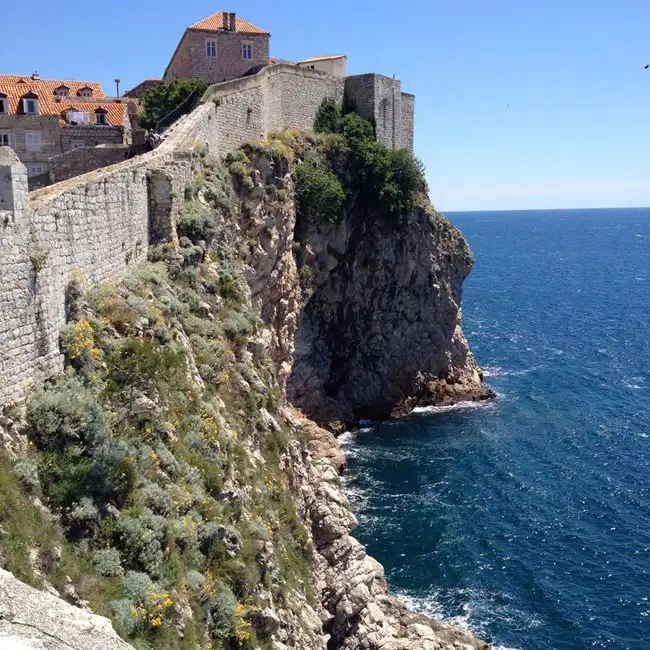
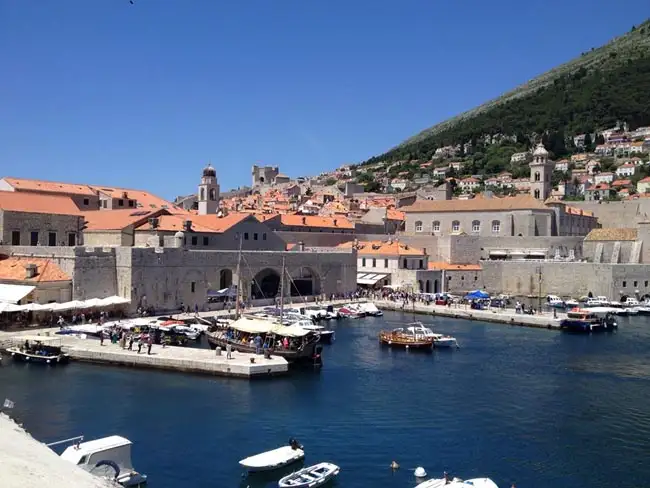
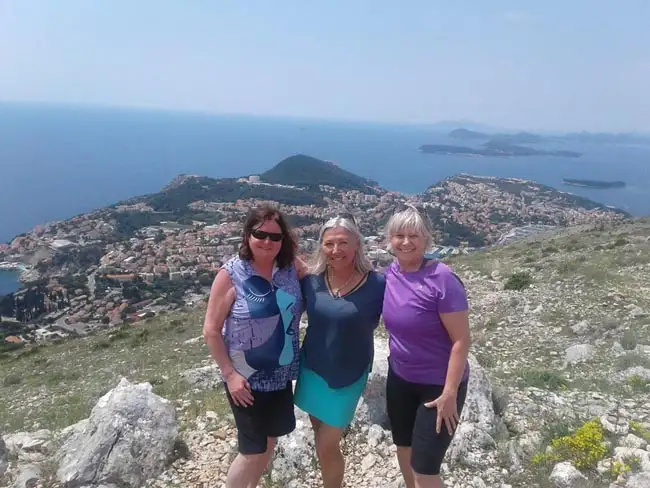
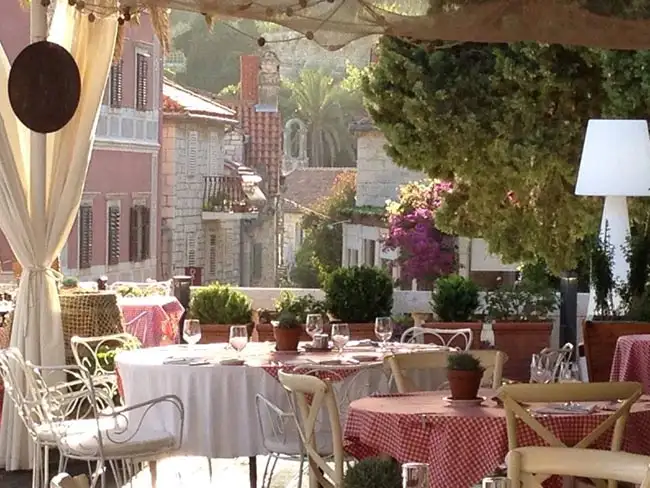
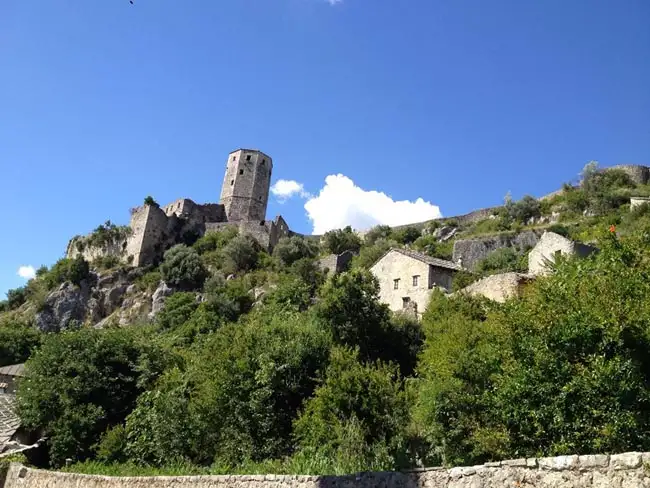
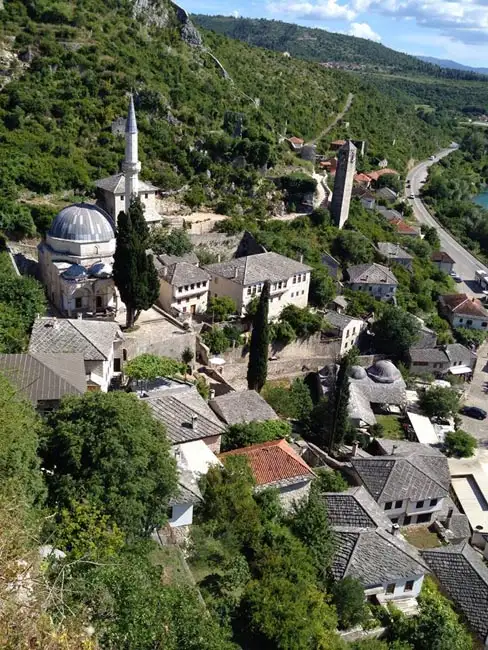
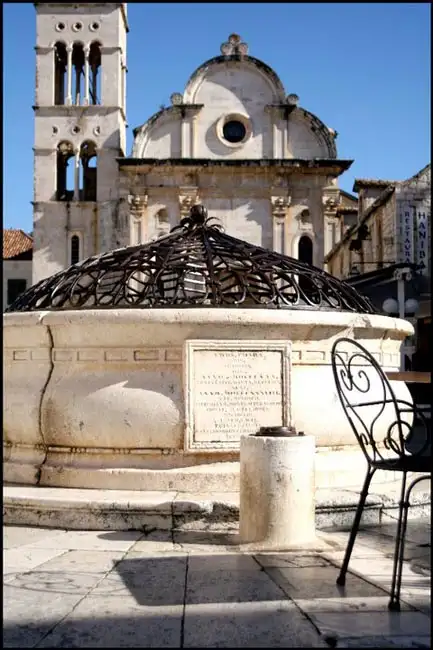
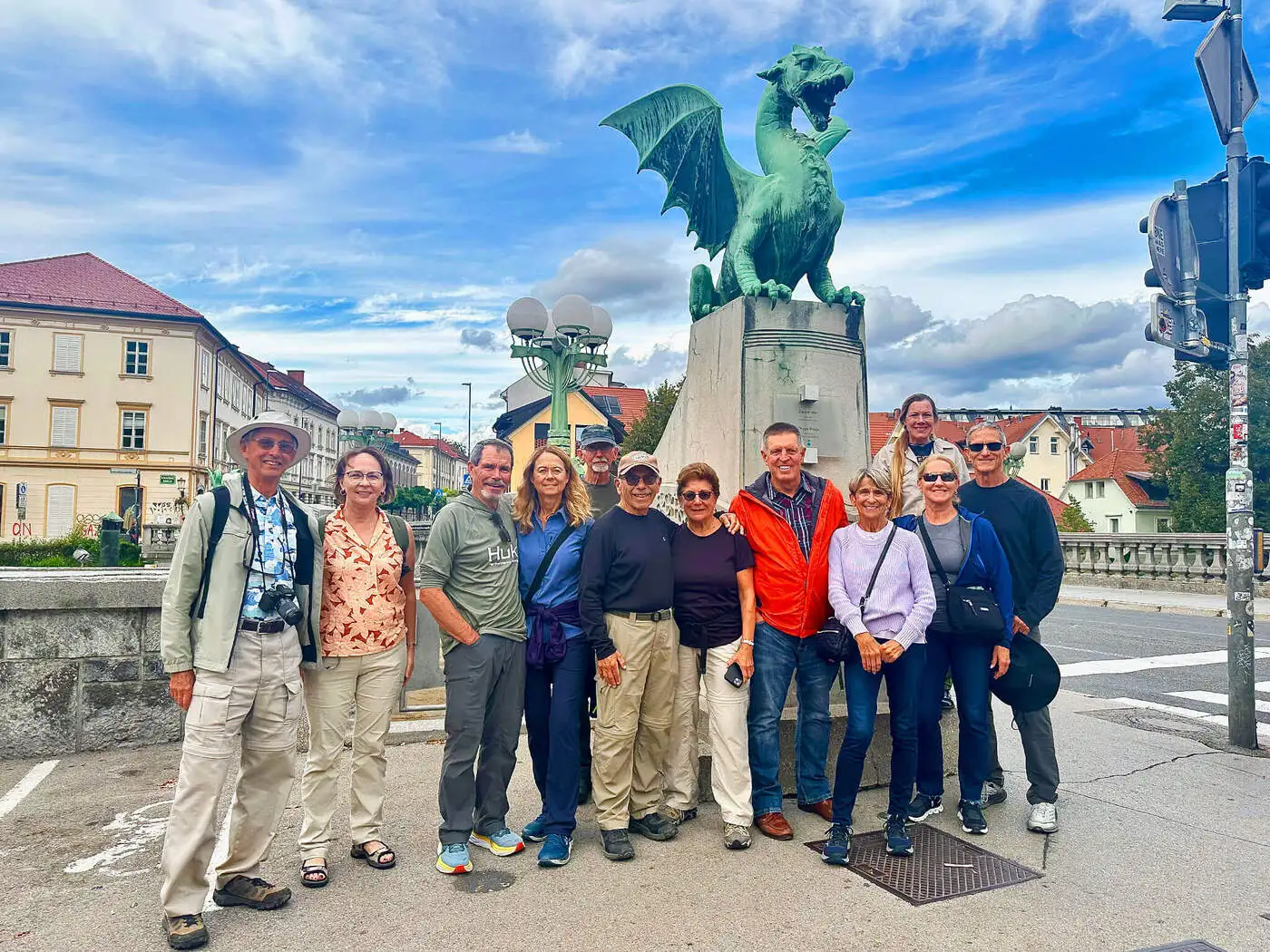
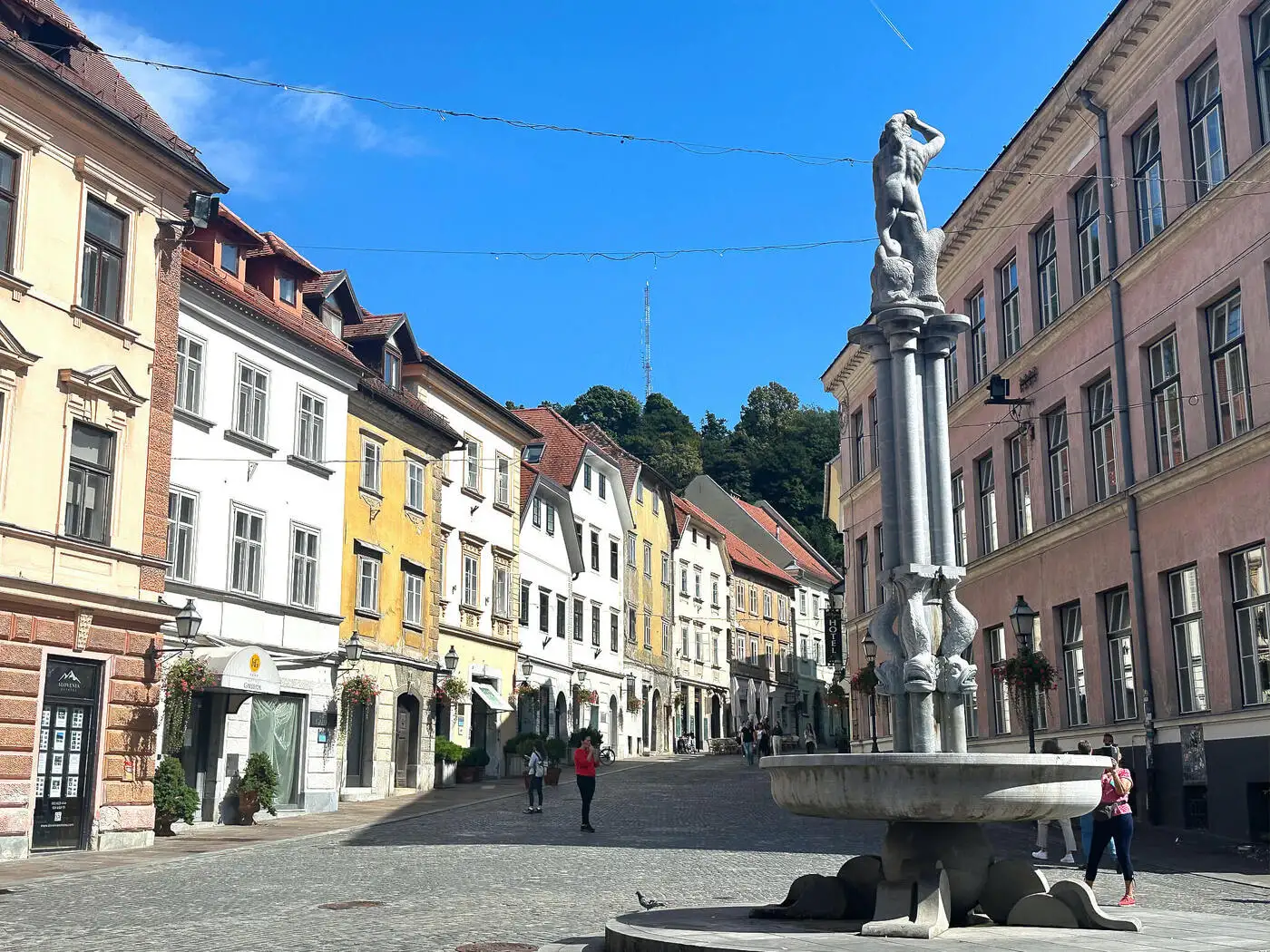
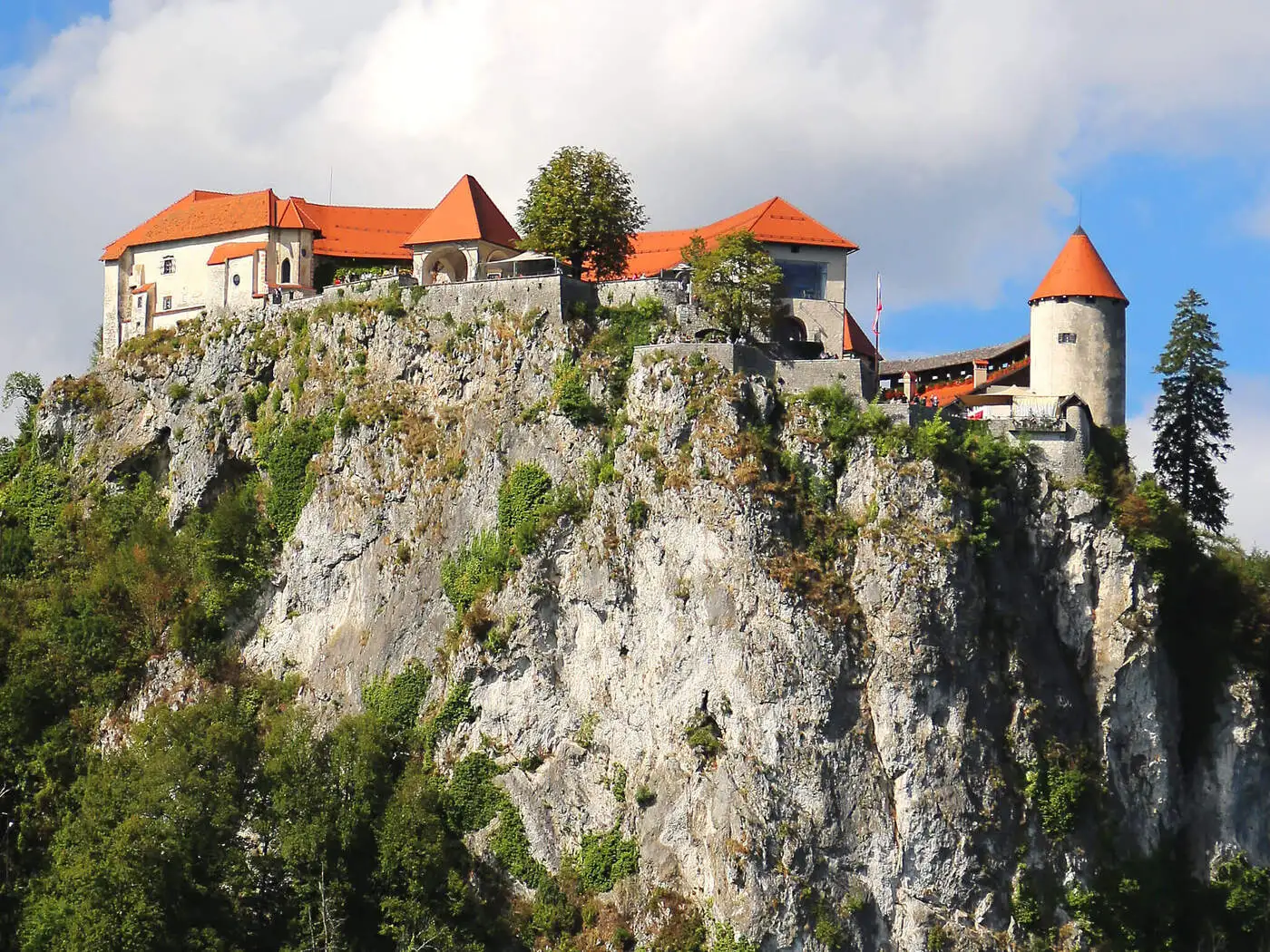
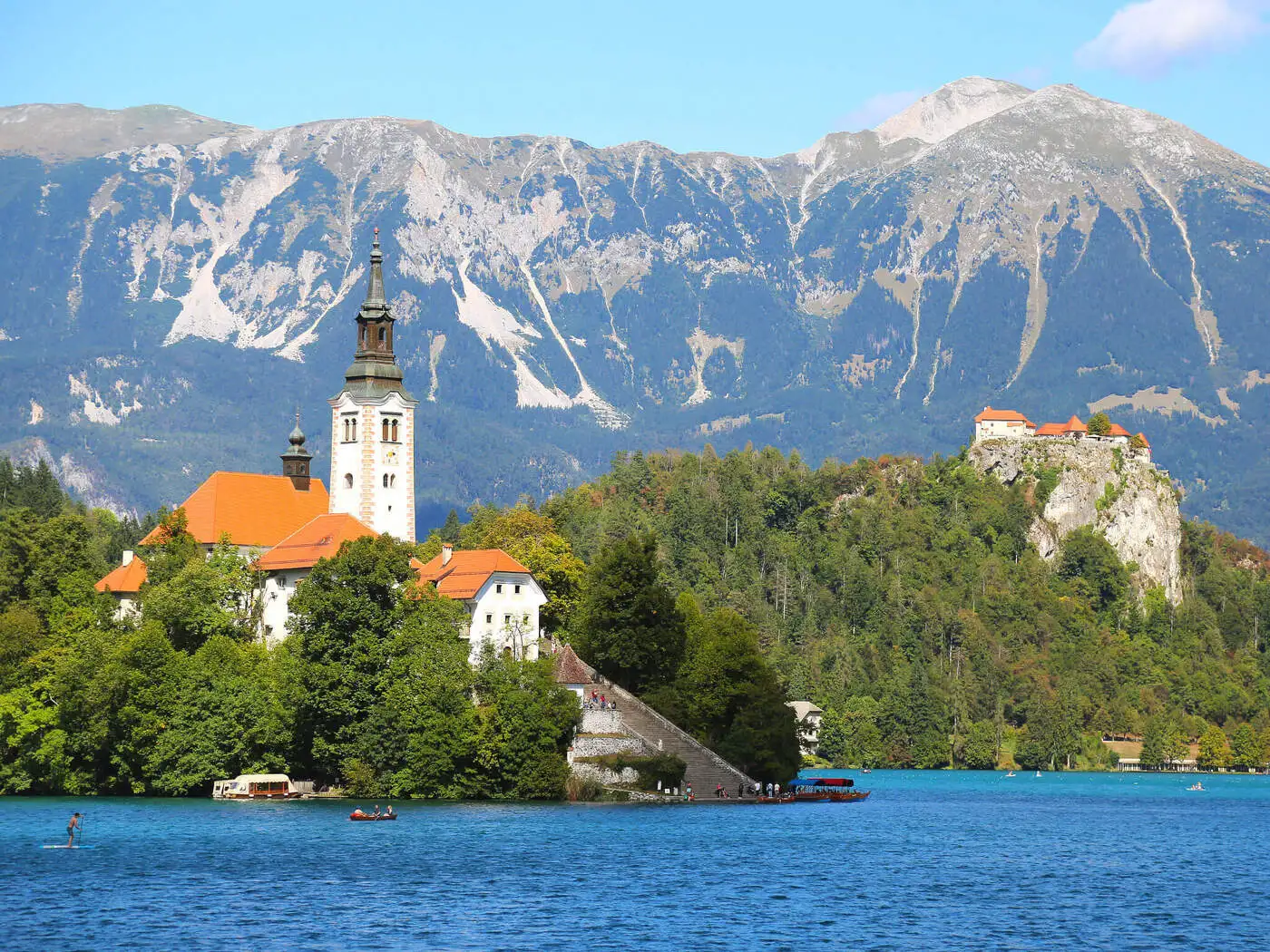
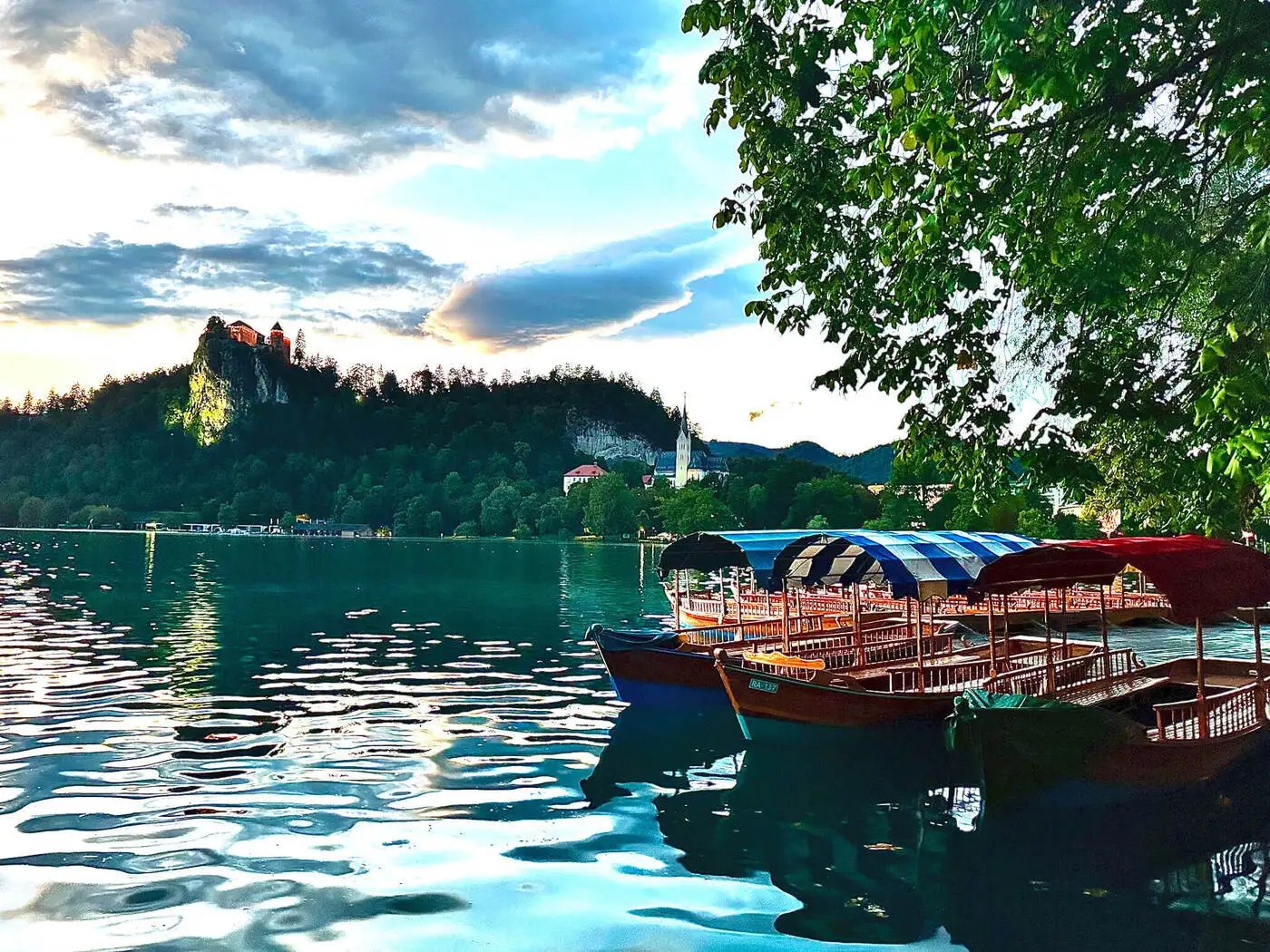
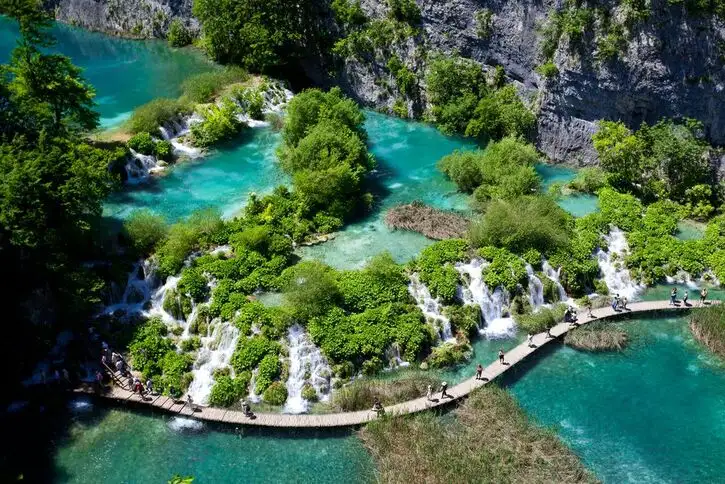
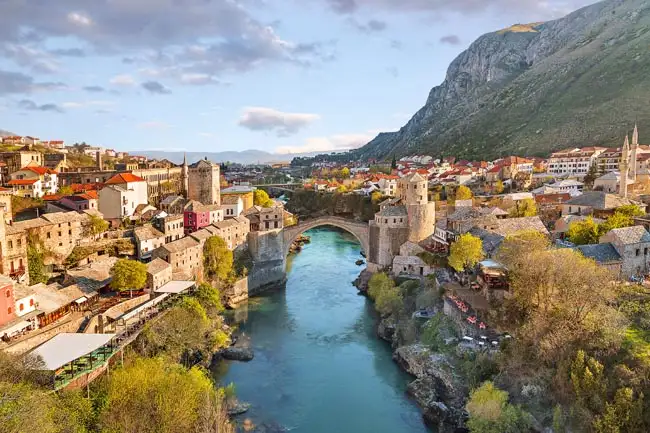
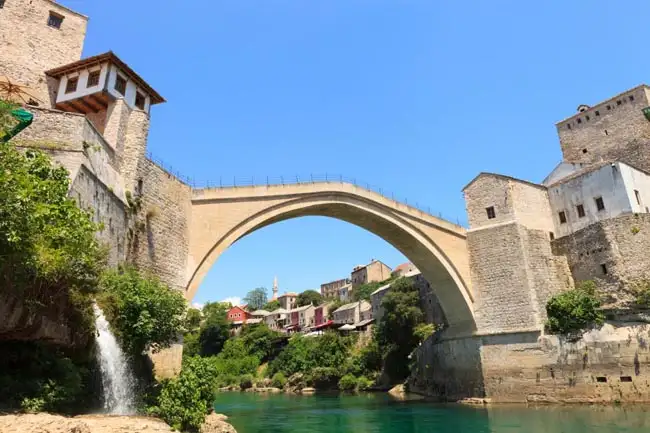
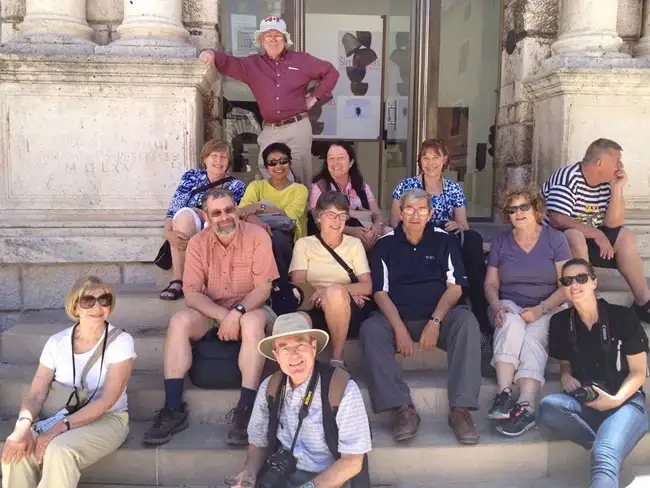
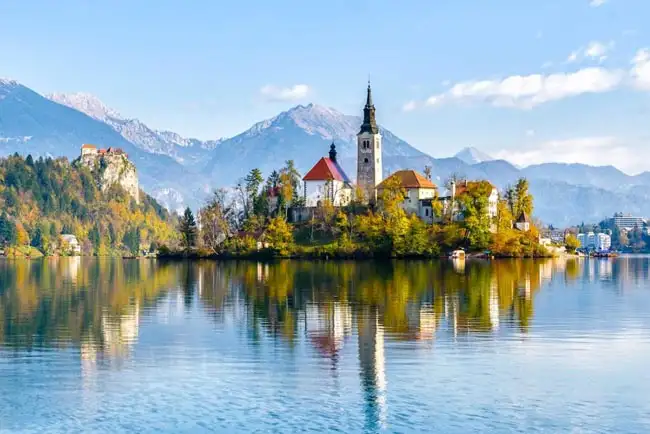
Excellent
Overall Rating
4.6
Extend Your Trip
This tour is part of a series that can be upgraded to make for a longer trip.
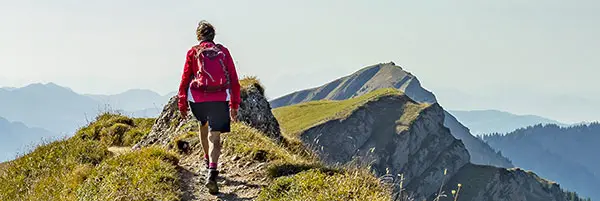
Fast and easy
Book this tour
Book your unforgettable adventure today! For any questions or advice, don't hesitate to contact us.
Have questions?
Contact Us
1-800-665-3998
- Final payment is due 90 days prior to departure.
- A non-refundable $1000 USD deposit is payable at the time of booking
- Optional Single Supplement: $1050 USD (number of singles limited).
- Transferring to another tour or tour date is only permissible outside of 120 days prior to departure and is subject to a $100 USD change fee. (Read our cancellation policy for more info.)
- $1000 PER PERSON DEPOSIT REQUIRED
Prices below are per person, twin-sharing costs in US Dollars (USD). Pricing does not include airfare to/from the tour and any applicable taxes. Get general information on flights to/from the tour.
Choose your departure date:
Frequently Asked Questions
- What is the maximum number of participants on a trip?Most of our tours carry a maximum of 18 participants; some tours (ie hiking tours) top out at 16. In the event that we do not achieve our minimum complement by our 90-day deadline, we may offer group members the option of paying a "small-group surcharge" as an alternative to cancellation. If all group members agree, we will confirm the trip at existing numbers; this surcharge is refundable in the event that we ultimately achieve our regular minimum. If the small group surcharge is not accepted, we will offer a refund of your deposit or a different trip of your choice.
- Can I extend my tour either at the beginning or end? What about stopovers?Yes, you can extend your tour either at the beginning or the end and we can book accommodation in our tour hotel. Stopovers are often permitted, depending on air routing. Stopovers usually carry a "stopover" fee levied by the airline.
- How do I make a reservation? How and when do I pay?The easiest way to make a reservation is via our website; during office hours, you are also more than welcome to contact us by telephone.
A non-refundable deposit is payable at the time of booking; if a reservation is made within 90 days, full payment is required. Some trips require a larger deposit. If international airline bookings require a non-refundable payment in order to secure space or the lowest available fare, we will require an increase in deposit equal to the cost of the ticket(s).
Early enrolment is always encouraged as group size is limited and some trips require greater preparation time.
Once we have received your deposit, we will confirm your space and send you a confirmation package containing your trip itinerary, any visa/travel permit related documents, invoice, clothing and equipment recommendations, general information on your destination(s), and forms for you to complete, sign and return to us. Your air e-tickets (if applicable), final hotel list, final trip itinerary, and instructions on how to join your tour, will be sent approximately 2-3 weeks prior to departure. - What about cancellations, refunds, and transfers?Please review our cancellation policy page for details.
- I am a single who prefers my own room. What is a single supplement?All of our tours have a single supplement for those who want to be guaranteed their own room at each location.
This supplement is a reflection of the fact that most hotels around the world do not discount the regular twin-share rate for a room by 50% for only one person occupying a room. Most hotels will give a break on the price, but usually in the range of 25-30% of the twin-share rate. This difference, multiplied by each night, amounts to the single supplement.
The conventional amount can also vary from country to country and some destinations are more expensive than others for single occupancy. In order to be "single friendly," the supplements we apply are not a profit centre for us and we do our best to keep them as reasonable as possible.
On most tours we limit the number of singles available, not to be punitive, but rather because many hotels allow for only a limited number of singles; some smaller hotels at remote locations also have a limited number of single rooms available.
Please note that most single rooms around the world are smaller than twin-share rooms and will likely have only one bed. - Do you have a shared accommodation program?Yes! If you are single traveller and are willing to share, we will do our best to pair you with a same-gender roommate. On most of our tours, if we fail to pair you, we will absorb the single supplement fee and you will default to a single room at no extra charge. At some destinations, however, where single rooms are not significantly discounted, or not at all, we may apply a "mandatory" single in the event that we cannot find you a share partner. This is usually 50% of the usual supplement, but can be as much as 100%. If applicable, this proviso will be noted on each tour page on this website, on your invoice, and in our tour date/price book (available for download under "Resources").
Please choose a departure date!
